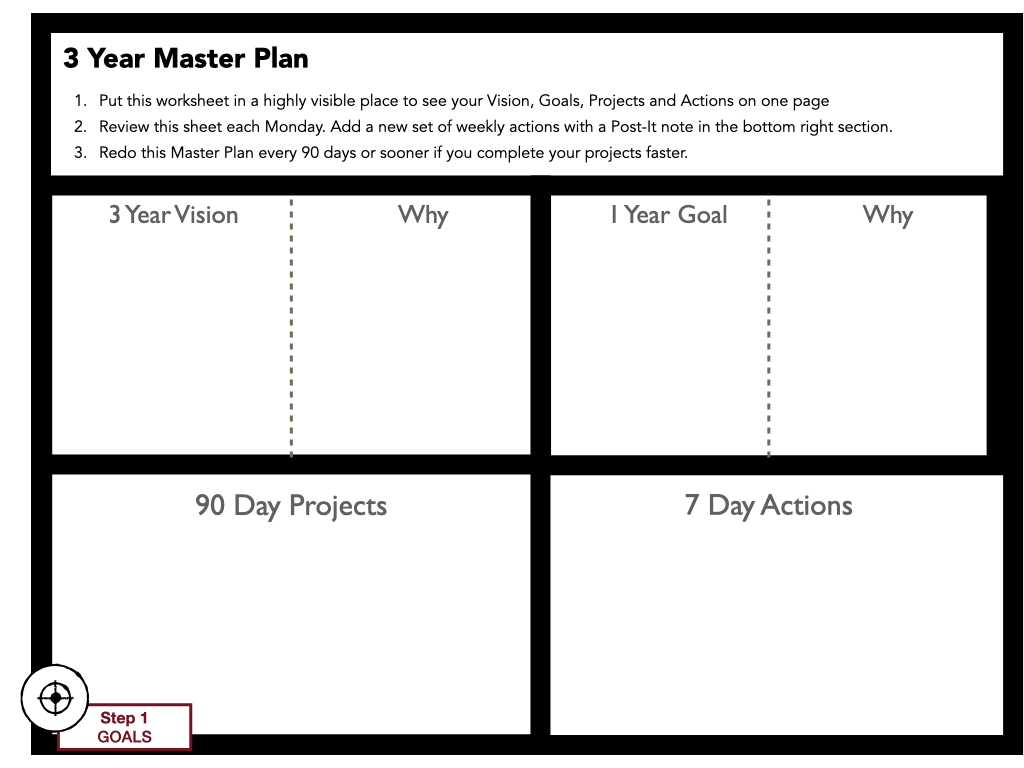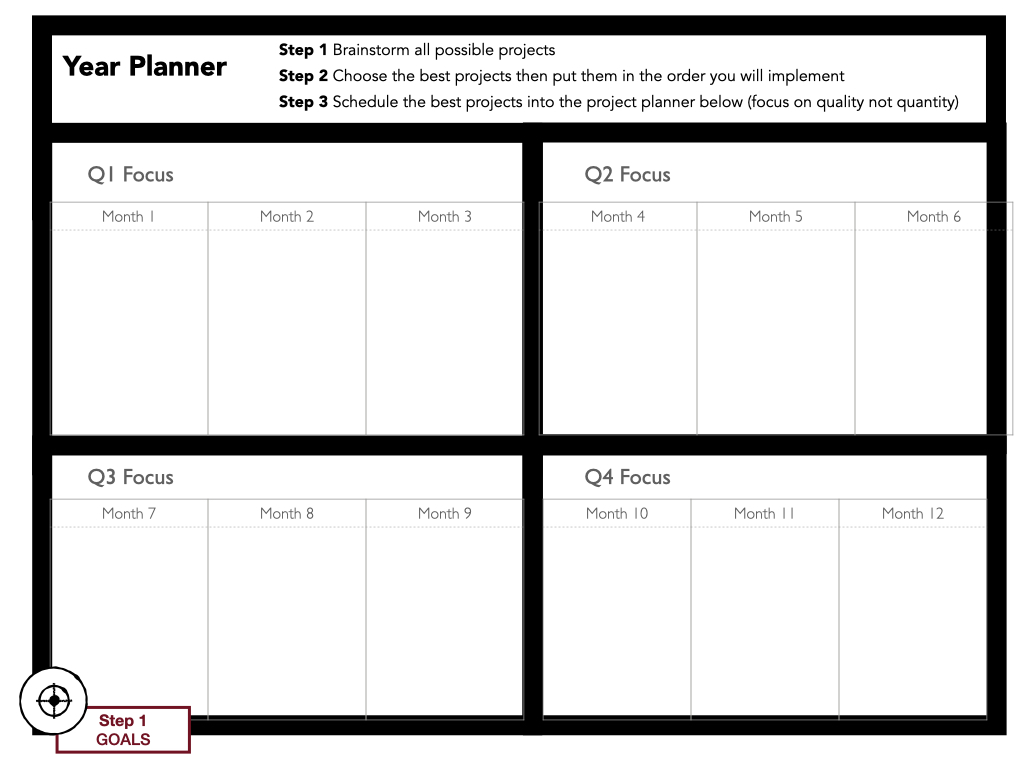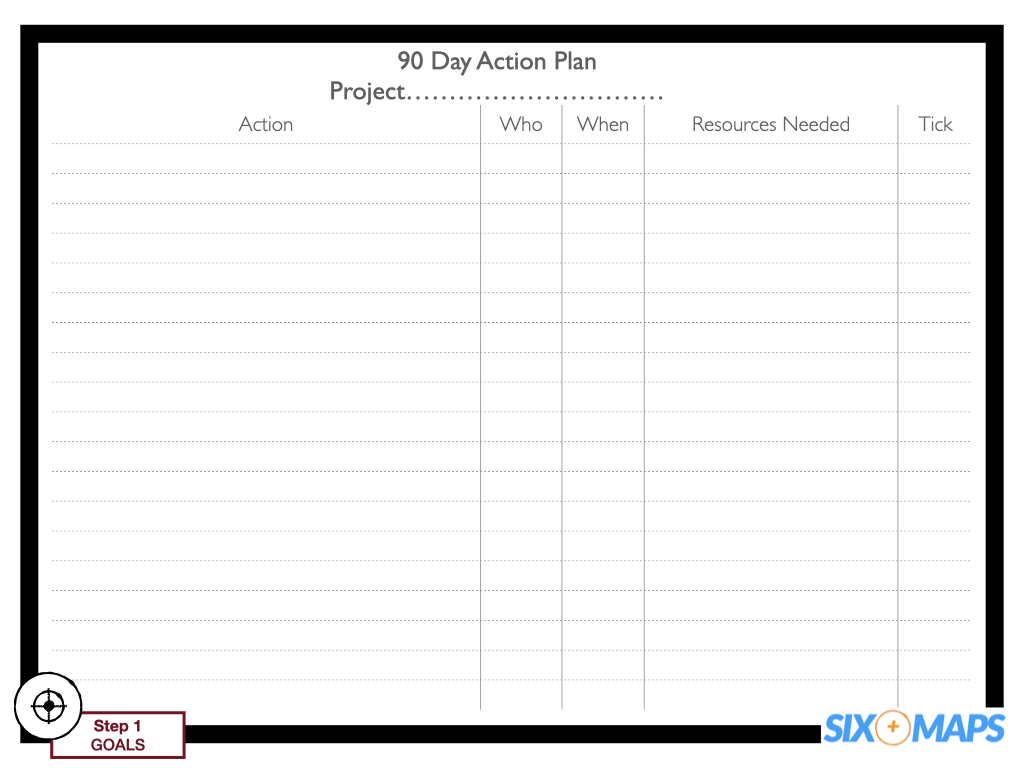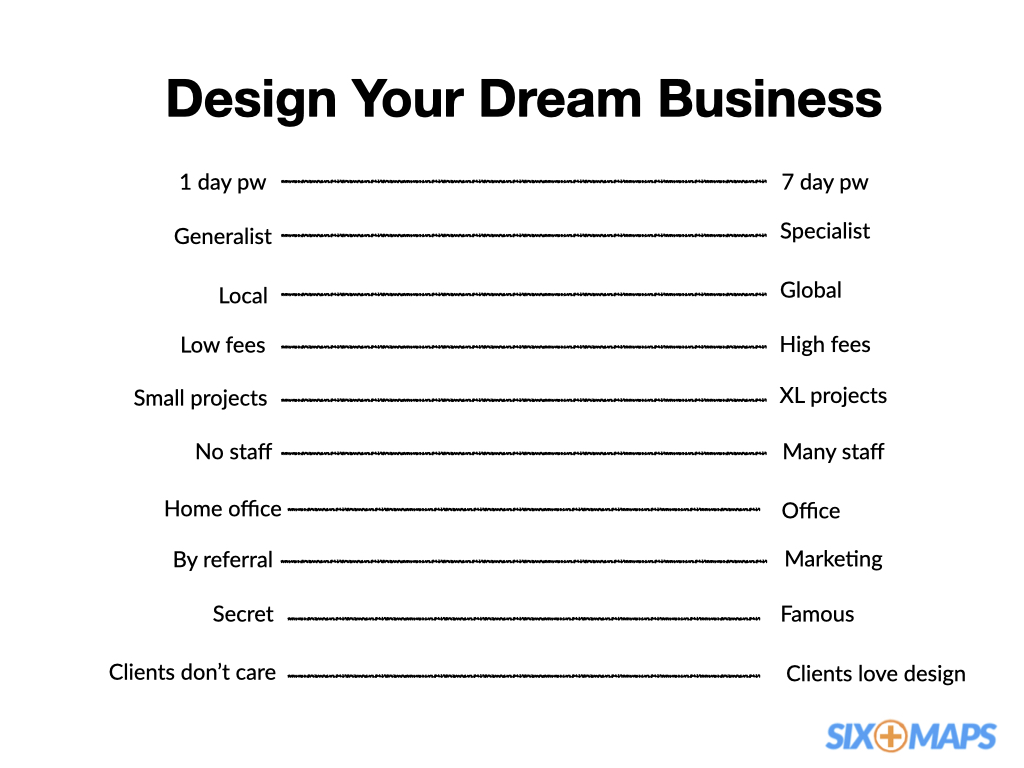CLICK for Video Transcript
As well as being a marketing coach for architects, I've also spent about 15 years working as a mental skills coach with professional sports people. So I actually, myself, was a professional cricketer for 12 years. Got paid for a living. Traveled around the world and played for New Zealand and various other professional teams. And it was great, great lifestyle. But then I moved into training the mental side for other sports people. And one of the things that we look to do is find out what is the driver behind a person? What is the secret driver that makes that person so passionate and driven toward something? Because, if you can find that and help them turn their passion, and their heart and their soul into moving towards a direction, they're almost unstoppable. |
And I don't know if you've ever come across people in your life where you've come across people who are just so driven, and you know they can't fail. And I've bet you, you've been in that position yourself too, where you've gone some period of your life where you've wanted something so bad and you knew you'd do anything to get it, that you just knew you were going to be successful out of it because you knew how much drive and energy you had behind it. So that's what I'm talking about on this, and I want to go through this exercise, cause if we can help you set a goal for your [inaudible 00:01:18] business and get you so driven to want to achieve it, so excited by it but also so energized in terms of doing what you have to do to get there, then it's going to be relatively easy for you to be successful. So let me explain how we do it. |
So just imagine, here's the problem with goal setting. The problem with goal setting is, here's a goal that someone's sets and there's their roadmap to it, and that's them down at the bottom, and they know what they need to do. They need to walk along the road and hit the goal. So let's say the goal is 75. There, if I said out of 100, how many yeses are there for this goal? Someone said, "Yeah, it's pretty hard, 75%. Okay. Well, 75% sounds all right." |
But what 75% is really, 75% commitment towards a goal, it means the arrow, is it kind of going ... well, maybe 75% of them are going towards the goal but there's another 25% that are going against it. So even weight loss, even food ... we should all be fit and lean and thin, shouldn't we? And in great shape. But I might say, "Yeah, I'm 75% keen on getting in shape. But then again, that piece of chocolate looks good as well." Or, sleeping in, in the morning instead of going to the gym, that kind of feels a good idea as well. |
So part of us wants it, and another part wants the stuff that doesn't get us there. And the problem is, if we put a goal ... let's say we've got a desire out of 100, and it's 75, which sounds like to a lot of people it's a pretty good number, but we come up against an obstacle at 80, what's going to happen? What's going to happen to our little blue man? Is he going to get to his goal? Well, no, he's going to get there, and he's going to get stuck behind the 80 obstacle. And, of course, there's always going to be an 80 obstacle and probably a 90 obstacle. And that's why everybody in the world doesn't achieve their goals, which is probably a good thing. But those who can get to 100, right? Let's say there's 60 and 80, and there's all these obstacles in the road. If you pick any goal that's worthwhile, particularly in business and, you know, you want to win better projects and you want to earn more money. Well, there's going to be things that get in the way. That's how it's supposed to be. There's supposed to be things in the way. It's not supposed to be easy, otherwise everybody would do it, right? |
But, if you were 100, if you were like so committed to that outcome and so excited by it, so driven by it, and all the arrows are pointing in the same direction, then when you get to 60, 80, 70, you just power on through. You find a way. So the secret is to find a way to get to 100, right? [inaudible 00:04:00] you're not motivated enough, not that you're not able. Kind of a [inaudible 00:04:02]. I'm so excited. Right? That's why people fail. That's assuming they have a strategy. Right? Strategy is usually the easy part. From your point of view now in this program, strategy's the easy part cause we're going to tell you what to do. |
If you just do it, I can honestly say, hand on heart 100%, if you do the stuff we tell you to do, you'll get good results. Now, I don't know how much better results you'll get but you'll be in a better position this time next year than you were this year at the same time. Okay? You'll be considerably better. How much better is going to be up to you. But the strategy is easy. We can tell you what to do, it's getting to 100, it's getting that motivation within you is the thing. Now you, obviously, forked out some money to be on the program, which is great. So you've got some level of motivation, but is it 100? Okay? |
So by doing this exercise, I'm going to take you through a couple of little, I guess this is an intro and then I'm going to show you a video where we walk Renee through this exercise in New York on stage. So it's a live video. And I'll show exactly what we do to get Renee up from 75 to 120. I know, you thought it just went up to 100. No, in Renee's case it goes up to 100. She said, "No, 100 never's the top with our family, 120 is the top." So anyway, we took her to 120. |
But let's say it's 100, right? It's getting to 100. So what you've got to know is there's two types of motivation. Either people are driven to avoid pain or they're driven to gain pleasure or both, a bit of both. It's good to have ... I'm scared of not being successful and not doing something, and I'm incredible desirous of something else. Okay? So we could use either but usually I tend to, when I'm trying to get people up the scale, it's usually make them feel good about an outcome rather than make them feel bad about staying where they are. Okay? So huge pain. Let's have a look at both. Huge pain and huge pleasure. |
So, for example, if you're at minus 100, you would be massively driven to move away from where you are now. Or, if you had a goal and that goal was 100 to you, you'd be massively drawn to it. So as an example, right? This is ... who's that? That is Jerry Lewis, isn't it? Playing a serious role by the look of it, possibly. Okay, so this is a pretty extreme example, but I need to make an extreme example to teach you really quickly. If someone had a gun to your head and said, "I want you go and do something ... one, two, and three and, if you don't, you're in trouble." You would probably be pretty highly driven to want to go and do one, two, and three. You would probably break laws. You would spend huge amounts of money. You would do all sorts of things, if there was extreme pain if you didn't. It wouldn't be a problem, right? |
Conversely, if I said you can go do these three things for me. There a little bit tricky but you should be able to get them done today and, if you do, I'll give you a million dollars, then you'd probably be, once again, highly motivated to want to go and do those three things. Okay? Assuming they're all ethical and legal, and all that type of stuff. |
It's interesting, on the negative side under huge pain, you're probably quite able and probably willing to do things which did break the law. Whereas, to get the million dollars you might not be. Okay, the drive is often ... there's usually more drive on avoiding pain then there is in getting pleasure. But anyway, when I work with people I like to work on how good life will be when they do the things that they're supposed to do. It's a nicer feel to be working off, right? People tend to set goals with their head and not their heart. And I'm here to say you should set your goals with your head and your heart. The heart is the important, the heart is where you get the good feel from. |
So when I've set goals in the past, for example, I want to lose a bit of weight, right? But in actual fact I have. But I've done it in the past many times and not lost weight. And I would've said my motivation to lose a bit of weight, I mean, everybody wants to lose a bit of weight, right? So my motivation was about 50 and it didn't happen. I didn't lose weight when I was at 50 because it's not enough. There's too many tempting treats that are at 80 or 90, right? And you go for the 90 treat rather than the 50 ideal, the way you should be. And vice versa, if I wanted to play the bagpipes, I've got no motivation to do that. So both the bagpipes and lose weight, really, even though I was up at 50 to lose weight, it didn't really make any difference. |
But play cricket for New Zealand, man I would wake up every morning thinking about what do I need to do today? There was no issue. Taking action was effortless compared to not eating ice cream or chocolate. Going for a run was effortless because I knew every time I did it, it was taking me towards my goal and I really wanted that goal. And of course, I got it. Cause nothing was going to stop me. Whatever I had to do, I was going to do it. |
And that's it, that's where you want to be for a goal. It makes taking action easy. And, you know, I'd love for you to be 100/100 for executing on this marketing plan that you're in now. I mean, it'd be good for me if you were there because it would be good for you if you were there. Life is so much easier if you're 100 driven for anything. Okay? So what I ultimately want is for you to be 100/100 for implementing every single step in this marketing program. Okay? The Sunshine Island Express. And put it in place cause I know it'll be good for you. It'll be healthy. |
All right? The secret is to find out what really inspires you? So I want to get you to Sunshine Island, where you get to work on fulfilling projects and you get to earn good money, and you probably want to get there as well, right? So we want to be up in that top right corner where you get fulfilling projects and you get well paid for it. That's where we want you, right up top. High fees, fulfilling projects, where you can pick and choose projects, where you can say no to projects that don't make you feel fulfilled, or which aren't pain fees that you need to be earning, or want to be earning. You can say no to them. And that's when you've got power. |
All right. So here's the process. Step number one. I want you to apply a slider I'm going to give you in a minute. Okay? You're going to apply a slider, you're going to rate it out of 100 where you are on the slider, and then you're going to tweak it. And you're going to keep tweaking it until you get to 100. Okay? And you're going to play around with that. And you're going to watch a video of Renee in a minute as well, and hopefully things you see on that video, it's about 40 minutes long, that'll help you understand how to get yourself up to 100. |
So let's have a look at the slider. What is the slider, firstly? Well, the slider is this thing here, and what you do is, there's a whole lot of criteria I want you to consider. And I want you to say, "Where do I want to be on the slider? Do I want to work one day a week or seven days a week?" I was speaking to somebody last week who said, "I work seven days a week and my goal is just to work five, that would be brilliant. If I could be working five days a week, that's be great." Do you want to be a generalist or a specialist? Okay? Now, there's no right or wrong answer but, from a marketing point of view, it's a lot easier if you're a specialist. |
Do you want to be local or global? Well, local sounds all right to me. Ironically, I'm actually global, aren't I? I travel around the world, speaking to architects. So, even though I put down low end, I'm actually at the other end, which I quite enjoy. I enjoy the travel. Do you want low fees or higher fees? Well, most people want to be higher fees. Maybe not the extreme end because you have to be an extreme specialist to be right at the top end probably, but at the top, in the top 25% I would've thought would be a good place to be. Same with income. |
Staff? You know, me personally, I'd say low number of staff would be good. Home office? Well, I have a home office. By referral? Well, you know, do you want your clients to come in by referral only? Do you want to be a referral only business? Or do you want to pick them up through marketing or somewhere in between? So, in this case, somewhere in between. Do you want to be famous or do you want to be best kept secret? Well, in this case, I'll put down famous end of the scale. |
So then what you're going to do is rate it out of 100. So, if I look at this and go, "Well, if I had that and I had that, and the slider was here, here, here, where would that put me?" Now, in this case, I'd say 70. Well, 70 is not a 100, is it? It's pretty good. So then the question is, okay, what do you need to change? Do you need to change where the arrows are on the slider or do you need to change some of the items on the slider? |
So let's have a look. Let's have a look. Well, it would be good. Four days a week would be brilliant, wouldn't it, instead of five? Four would be even better. And high fees, well, let's say, what if they were really high? What if I became a real specialist? And then I change the bottom one or I added one, where I only worked on projects where people love design, right? Really love design and really wanted high design type projects. Now where would you be? Well, I might be 100 now, but maybe I'm only an 85. So I've still got to keep tweaking it. |
So, apply the slider, rate it out of 100, play around with it. Don't expect to get it all right in the first five minutes. Don't expect to get to 105 minutes. You might have to work at it. You might have to work it over a couple of days or a couple of weeks. So once you've got your slider to wherever you want to get it on the first day, I want you to put it on the wall. |
If the floor is 70, and I'm going to assume you've got at least 70. If the roof is 100, I want you to put the slider you've got or whatever you've got onto the wall where it fits. So, in this case, if I was to say about 80, I might put the slider, I might stick it to the wall or tape it to the wall about there. And then, as I play around with it and change it around a bit, I find something which is a slightly better mix and I move it up to 85. And then I play around with it more and move it up to 90, and then finally, I get it up to 100. So that's what I want you to do. |
I want you to actually physically cut out the slider or use the slider we give you on the worksheet and place it on the wall so that you can see. If you're not 100, you need to keep tweaking the picture. Now's there's an important point made at the end of the video on the demonstration in New York and that is, what would you do if you were drawing a sketch of a building and you were only 70% happy with it, what would you do? Well, you'd redo it. You'd work around and change some of the lines, change where the windows are, you'd move it around. And you'd go, "What does that look like?" And you might go, "Oh, that's 80. No, I know it can be better." And you keep tweaking it until you've got it to how you wanted it. Right? You wouldn't just go, "Oh, there you go. I've done it 75. Oh, no, that's a pity. I wanted it better than that but that's where it is." You wouldn't. As an architect, you'd keep changing it until you got it how you wanted it. |
And that's exactly what I want you to do with your life, with your business, with how you want to run this business, where you want your business to be in 12 months, 24 months. I want you to keep tweaking it until you get it perfect, until you get it 100/100. |
So what I want you to do now with that in mind is, watch the next video, where Renee shows us how to get from 75 to 120. I know, you thought you'd only get to 100 but, in Renee's case, she can go to 120. Watch that, and then I want you to sit down and work through your goal. What is your goal? Where do you want to be in 12 months time? And use what you've learned in this video and the video with Renee to work out what your 100% motivation is and really important to have that highly driven goal. Okay? So turn this off now and get on to the next video. |
Goal Setting Using the 100 Scale
Let's now go through a process for goal setting that uses a 100 scale.
You will select possible goals, then rate them on the 100 scale and then adapt, tweak or refine the components of your goal until you hit 100. Just like an architect designing a perfect building.
A 100 goal is a target where your heart and your head is saying 100 'yes's. A 50 out of 100 is only partly exciting to you.
You will see a live demonstration with Rene who goes from 75 to 120 on her motivational scale when she discovers what she REALLY wants.
You really should have been taught this powerful technique earlier.
PLANNING
Master Plan

Year Planner

90 Day Plan

Watch video above to see Rene take her motivation up to 100/100 then to 120/100.
Assignment
If you want to go deeper on this section, download the Goal Setting Slider - Worksheet (PDF), then go through the process and fill it in
Treat this as a work in progress - subject to further development, revision, or being redone at a later point. It doesn't have to be perfect, however the more you put into the exercise, the more you'll get out of it.
You can complete your assignment in any convenient manner:
- Directly inside the PDF file: use Adobe Acrobat, Mac Preview or any tool that allows you to edit PDFs and save the edited version; upload the PDF with your notes.
- Print the PDF out then work on it by hand. If you know how, scan and upload your filled in sheet.
- Easy non-techy way: use the worksheet PDF as a reference, then write your notes in a Word or other text document and upload that file.
Any way you do it is fine - the main thing is "Do It"...

